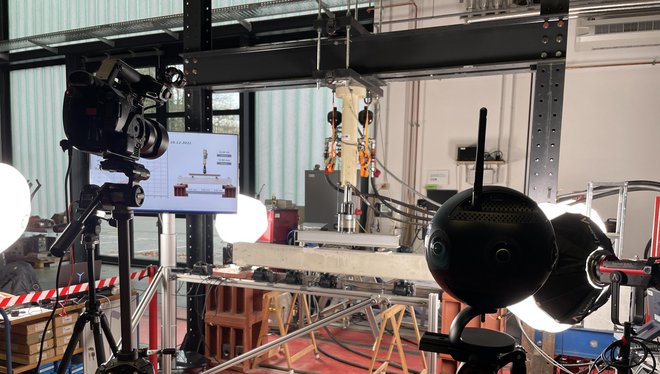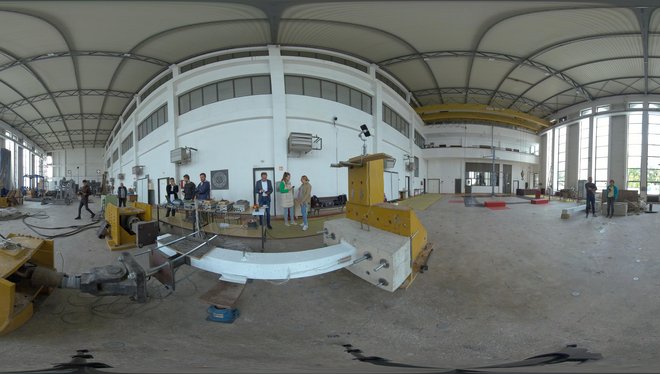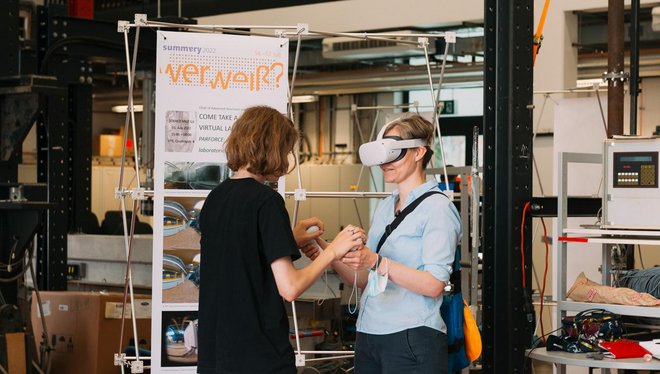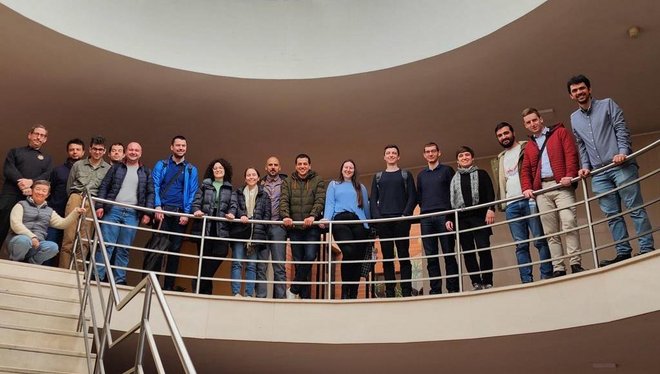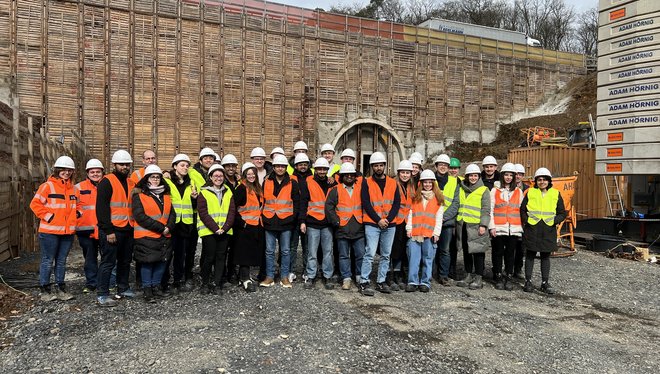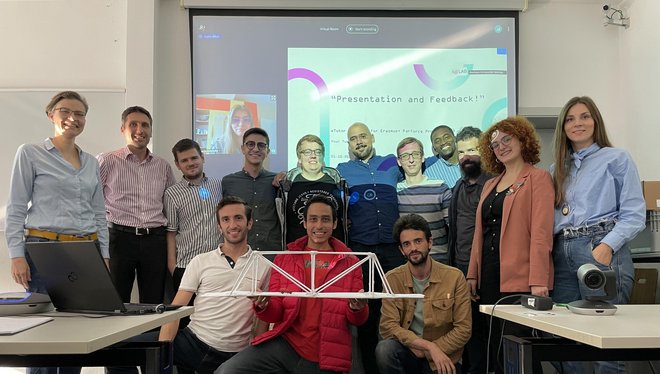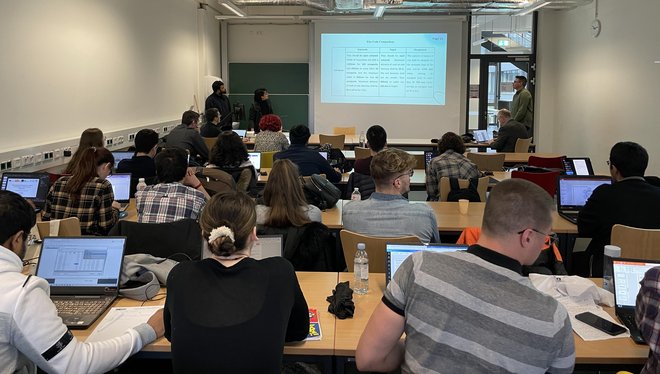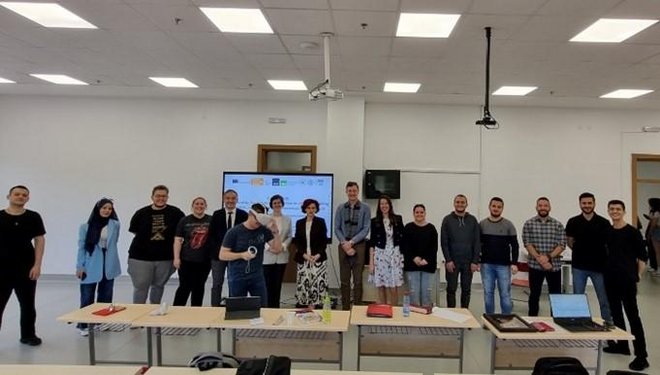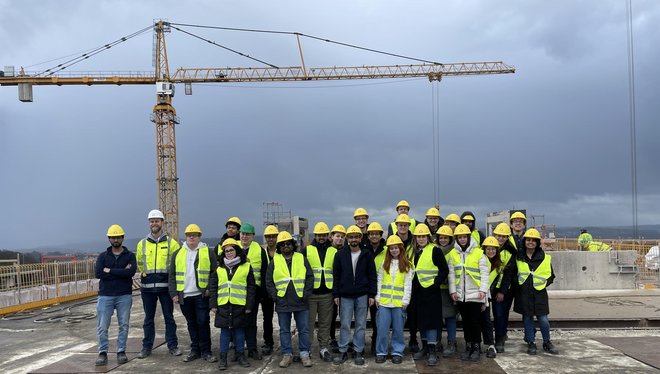E-Tutor Training | Ph.D. Training I | Ph.D. Training II | M.Sc. Pilot Course (2022/2023) |
|---|---|---|---|
e-Learning and Moodle functionalities | Applied and Computational Mathematics in Engineering Application | Applied and Computational Mathematics in Engineering Application | Assessment of Structures under Wind, Fire, and Earthquake |
Intellectual Output 1 | Intellectual Output 2 | Intellectual Output 3 |
|---|---|---|
Instructional design guide: didactics of media learning environments | Methods and algorithms for digital learning tools evaluation | Remote-access Experiments in Structural Engineering |
Wind Tunnel Experiment
360-degree.education/Wind Tunnel
The virtual tour of the wind tunnel facility at the Ruhr-University Bochum, Institute of Wind Engineering and Fluid Mechanics (WiSt), has in total 14 scenes, i.e. Panoramas, which visualize the whole facility, from outside the building until inside the wind tunnel chamber. There are two different laboratory experiments introduced in this virtual tour, the boundary layer test of the grouped cylinders and the free-vibration and forced-vibration tests of the horizontal cylinder. The tour includes hotspots that provide information to students such as:
- Viewing course material and slide shows
- Description boxes on top of the real objects
- Technical sheets of the equipment in the laboratory
- Video guide around the wind tunnel hall
- Video footage of the running tests from different angles
- Theoretical knowledge on laboratory tests
Apart from the information hotspots, two scenes have been equipped with quiz hotspots to assess the interim knowledge of users about the presented VT content. Users can try quizzes as many time as needed, since quizzes are not defined as embedded assignment and will not be evaluated. The timer and score display are defined only for users to track their performance. Since users cannot move in real environment around, arrows on the ground and doors on the walls are defined as hotspots, which can take the user from one scene to another.
Fire Resistance Test
360-degree.education/Fire Resistance
This virtual tour of the fire resistance test facility at the University of Aveiro, Department of Civil Engineering, depicts a fire resistance test, which was conducted on a gypsum plate wall. The objective of this test was to evaluate the integrity to flames, hot gases, and thermal insulation with respect to criteria of standard fire resistance classification. It is worth noting that the ambient conditions and test setup at this facility are not suitable for huge attendance, therefore, fire resistance tests are conducted under safety restrictions and only technical staff are allowed to audit experiments in person.
The VT of the fire resistance test has in total 13 scenes, including three 360-degree videos. The scenes are organized in a way that by moving around the virtual room, users can view time steps of the experiment as it has been conducted in real life (as a sequential view). Therefore, the VT begins at minute 0 (first scene) and ends after 77th minute (the last scene). A 360-degree video at the end of the test reviews the whole experiment that was conducted in 77 minutes in 7 minutes. The information hotspots embedded have above all the following functions:
- Showing the construction of the gypsum board wall
- Depicting the exposed side of the wall before and after test
- Describing the equipment and data acquisition system at the laboratory
- Showing raw sensor data and footage from thermal cameras
- Depicting the final results and tables related to the fire classification
Quasi Static Test
This virtual tour of the quasi-static test has 4 scenes, including 3 panoramas and one 360-degree video. Panorama footages are conduced from the column element at the beginning of each test, once from the column without damage at the hinge area, and once after the damaged element from the first test is repaired by polyurethane material and is about to be tested again under the same load cases. The third panorama scene depicts the whole test setup from another viewpoint. The 360-degree video has been employed to show an overview of the laboratory and test setup, as well as providing users with an understanding about how slowly the column element is moving during each cycle of loading. The information hotspots embedded within this VT have above all the following functions:
- 2D footage from the hinge area, before and after crack propagation
- Close-up view of cracks and test equipment, including data acquisition systems
- Diagrams of loading cases at the end of each test
- Time-lapses of column element deflections at the end of each test
- Raw data of the sensor recording at the end of each test
Shaking Table Test
The virtual tour of the shaking table facility at the Institute of Earthquake Engineering and Engineering Seismology (IZIIS), includes Panoramas, which visualize the whole facility from the outside until under the table itself. The laboratory can perform non-destructive testing of full scaled structures and equipment using ambient vibrations and forced vibration methods.
Interactive Python Tool
This Python application is capable of automating the estimation of load-bearing capacities using data from experiments and simulations, presenting a pathway to expedite and enhance the accuracy of hand calculations for students or designers.
Abrahamczyk, L., Mirboland, M., Koch, Ch., Penava, D., Höffer, R., Apostolska, R., Lopes, N., Kähler, U. (2022): Holographic/Virtual Experiments for Higher Education in Structural Engineering [Extended Abstract]. 10thICCSM, Pula, Croatia.
Lopes, N., Vila Real, P., Kaehler, U., Abrahamczyk, L. (2022): PARFORCE - Partnership for Virtual Laboratories in Civil Engineering [Poster]. Risks and Sustainability in Construction (risco day), Universidade de Aveiro, Portugal.
Salzinger, J., Kurniawati, I., Abrahamczyk, L., Höffer, R. (2023): Thinking outside the box Virtual labs in engineering education. 9th International Conference on Higher Education Advances (HEAd’23), June 19 – 22, Valencia, Spain.

